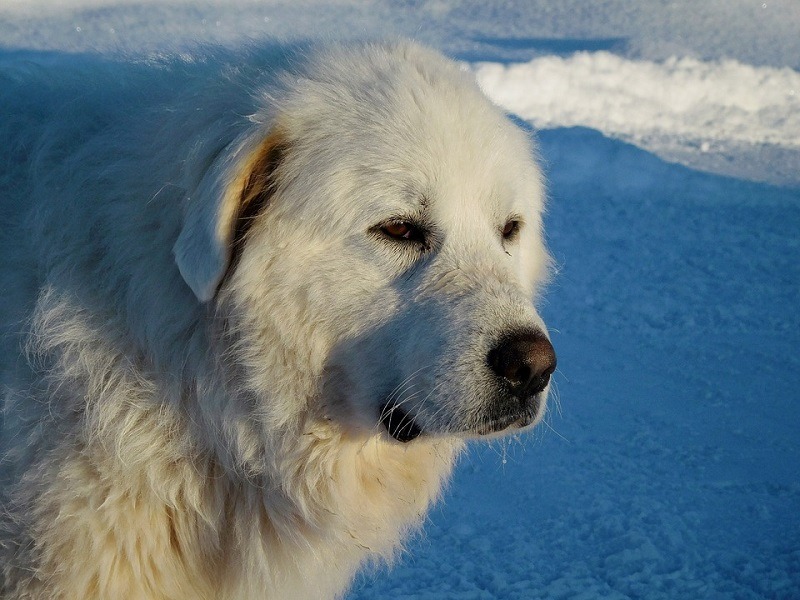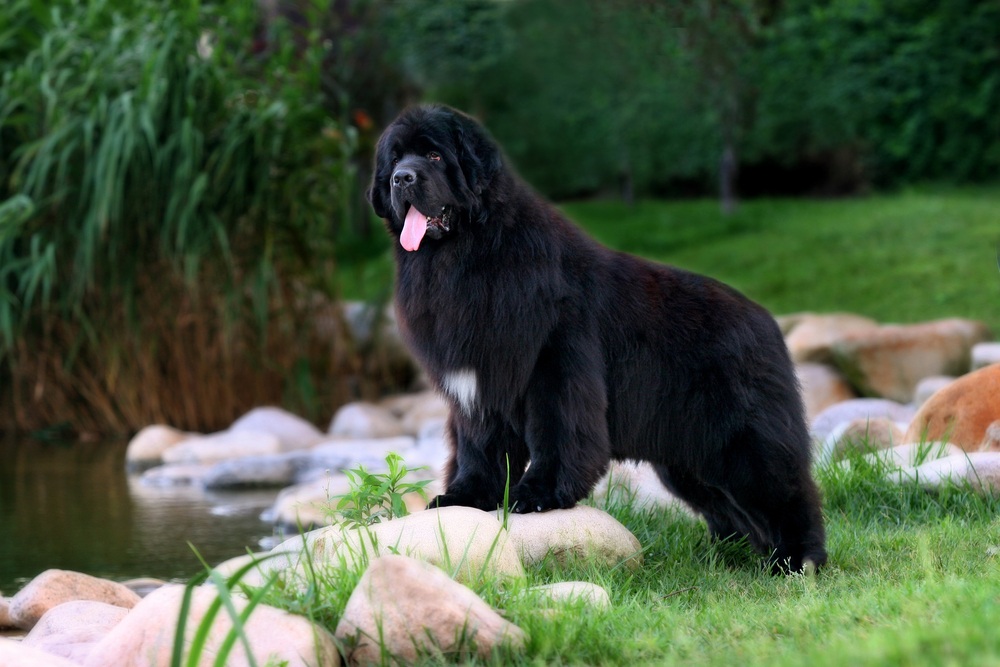9 Dog Breeds That Look Like Bears (with Pictures)

Updated on

Like you, we think all dogs are pretty great. But there’s just something about a big, fluffy pooch that captures our heart. Maybe it’s because we all grew up with stuffed teddy bears of our own, and like to imagine those old friends coming to life! Or maybe these dogs are just undeniably regal and cute.
Whatever your reason for liking dogs that look like bears, there’s no shortage of breeds that fit the bill. So, whether you’re trying to determine the breed of a gorgeous beast you saw around the neighborhood or are considering adopting a bear of your own, here’s where to start:
The 9 Dog Breeds That Look Like Bears
1. Great Pyrenees

Height
25-32 inches
Weight
Over 85-100 pounds
Lifespan
10-12 years
A.K.A.
Pyrenean Mountain Dog
While the Great Pyrenees isn’t technically the biggest or the fluffiest dog breed on Earth, there’s a reason so many people call them Polar Bears! These white beasts are guard dogs at heart, with a gentle and confident temperament that does great in most households.
Even though these dogs are quite big, they actually do quite well in smaller homes (within reason, of course). When a Great Pyrenees isn’t out protecting its livestock, they spend most of their time lying about. However, it’s best to keep your Pyr on-leash at all times, because they’re notorious for wandering off when given the chance.
Like most large breeds, Great Pyrenees are predisposed to health concerns like hip dysplasia, bloat, and heart problems. Fortunately, the breeding community has stepped up to protect the health of these gentle giants so these issues aren’t as prevalent as in some other breeds.
2. Tibetan Mastiff

Height
Over 24 inches
Weight
70-120 pounds (female) or 90-150 pounds (male)
Lifespan
10-12 years
A.K.A.
Bhote Kukur
While every breed on our list deserves a place here, the Tibetan Mastiff might truly be the most bear-like of all dogs. These mammoth pups are large, stocky, fluffy, and short-snouted — the perfect recipe for a living, breathing teddy bear.
If you think the Tibetan Mastiff gets its large and intimidating size from all of that fur, think again. The breed, used as a guard dog for millennia, is covered in pure muscle. Intruders beware because that muscle doesn’t slow them down much, either.
Training a Tibetan Mastiff is more about forming a strong bond than strict obedience. If this dog doesn’t respect and trust its owner, training of any kind won’t get far.
3. Chow Chow

Height
17-20 inches
Weight
45-70 pounds
Lifespan
8-12 years
A.K.A.
Songshi-Quan
Arguably, the Chow Chow could be compared more to a lion than a bear. It’s native name, Songshi-Quan, even translates to “puffy lion dog.” Still, there’s no denying the resemblance this breed shares with a stuffed teddy bear. Along with their dense coat, the Chow Chow’s short snout also mimics a bear’s. Beneath all of that fur, though, is a body full of powerful muscle.
Going back to the lion comparison, many owners compare the personality and temperament of the Chow Chow to a large cat. This breed definitely isn’t the most social, but with proper care and training, they can thrive in a variety of living situations.
While the Chow Chow is incredibly intelligent, they tend to be stubborn and only do things on their terms. Investing in professional training from an early age can help ensure your dog grows up to be well-adjusted.
4. Eurasier

Height
19-24 inches
Weight
40-70 pounds
Lifespan
12-16 years
A.K.A.
Wolf-Chow, Eurasian Spitz
The Eurasier shares a striking resemblance to the Chow Chow, but with a distinctly wolf-like face. The breed’s thick coat can come in almost any color, making for some absolutely beautiful dogs. As puppies, they look like fluffy teddy bears, slowly turning into miniature Grizzlies as they mature.
Behavior-wise, the breed is calm, loving, and confident. However, even with proper socialization, the Eurasier may never truly trust strangers. As long as this dog gets plenty of time with its loved ones, it will be happy, healthy, and well-adjusted.
Due to their size, these dogs tend to present with hip dysplasia, gastric torsion, and thyroid disorders. Because the Eurasier is carefully bred and less popular than many other breeds, most of these potential health conditions are fairly rare.
5. Samoyed

Height
19-24 inches
Weight
35-50 pounds (female) or 45-65 pounds (male)
Lifespan
12-14 years
A.K.A.
Bjelkier
If the Great Pyrenees is a full-grown Polar Bear, then the Samoyed is its cub. These dogs were bred specifically for working in the frigid tundra, giving them thick, white double coats and upturned mouths. Because of their permanent smiles, which help prevent freezing drool in the cold air, many lovingly call the Samoyed the “Smiley Dog.”
The Samoyed’s coat can withstand temperatures as low as 60 degrees below zero. In the summer, though, it’s dual layers can also keep out the heat. Therefore, if you own a Samoyed in a warmer climate, it’s recommended to keep their fur long rather than shorn during the summer.
As far as health goes, the Samoyed ranks pretty high. Responsible breeding practices and regular health checkups can help nip common issues in the bud.
6. Newfoundland

Height
26-28 inches
Weight
100-120 pounds (female) or 130-150 pounds (male)
Lifespan
9-10 years
The Newfoundland may be big-boned, but don’t let the size fool you. This giant teddy bear is one of the most patient and confident breeds in the world. You might also be surprised to learn that the Newfoundland is an avid, accomplished swimmer. In fact, just like the Saint Bernard is known for saving skiers from the Swiss Alps, the Newfoundland acts as a literal canine lifeguard in some parts of North America.
At home, the breed’s quiet protectiveness makes them an excellent companion for children. While the Newfoundland’s can present some unique challenges, these dogs can handle rambunctious kids without worry. Overall, the breed is quite easy to train and is welcoming to strangers.
Newfoundlands are happiest when kept indoors with their loved ones. However, remember to provide daily exercise and offer opportunities for activities like hiking and (of course!) swimming.
7. Caucasian Shepherd

Height
23-20 inches
Weight
99-170 pounds
Lifespan
10-12 years
A.K.A.
Caucasian Ovcharka, Caucasian Sheepdog
If you crossed a Grizzly Bear with a dog, you’d probably end up with something pretty close to the Caucasian Shepherd. While this breed is less well-known than many of its other bear-like counterparts, it is undeniably a dog that looks like a bear!
While many of the dogs on this list are more like teddy bears than real bears, the Caucasian Shepherd’s temperament should not be taken lightly. Bred for guarding, the breed is known for being absolutely fearless when it feels threatened. Caucasian Shepherds are loving and calm with their family, but an unplanned run-in with a stranger can spell disaster.
Training this breed is not for the faint of heart, so owners should seriously consider hiring a professional when they bring home their Caucasian Shepherd. Because of their lack of popularity, though, the breed is largely healthy.
8. Leonberger

Height
26-32 inches
Weight
90-140 pounds (female) or 110-170 pounds (male)
Lifespan
9 years
If you ask us, the Leonberger is a criminally underrated breed of dog. These gentle giants resemble elegant lions — as legend claims, the breed was actually developed to mimic the lion in the German city of Leonberg.
Like Newfoundlands, many Leonbergers work as water rescue dogs in Canada and the United States. As household companions, the breed is friendly, affectionate, and easy to train. However, while they enjoy lounging around the house, living in a small apartment or condo isn’t the life for a Leonberger.
9. Pomeranian

Height
6-7 inches
Weight
3-7 pounds
Lifespan
12-16 years
A.K.A.
Deutsche Spitze
We’ve spent most of our list focusing on fluffy giants. But one of the most bear-like — well, teddy bear-like — breeds out there is, hands-down, the Pomeranian. These tiny dogs are adorable balls of fur, closely resembling our favorite childhood toy.
While the Pomeranian is perfectly sized for lounging on laps, it needs just as much exercise as any other dog. If you play with your Pomeranian outside, though, watch out for their escape artist tendencies.
Sadly, many toy breeds receive insufficient training and socialization. Pomeranians are extremely intelligent, though, and thrive on the opportunity to show off their brains.
Conclusion
No, you can’t bring home a bear from the great outdoors and call it a pet. But you can welcome one of these canines into your home and call it good. If you want, you can even name your new best friend “Bear” for good measure!
Do you own or know a dog from one of these breeds? Do you agree that they resemble bears in real life? Share your opinions in the comments below!
- See also: 100+ Fluffy Dog Names
Featured Image Credit: Samoyed by changinglifestyles, Pixabay










